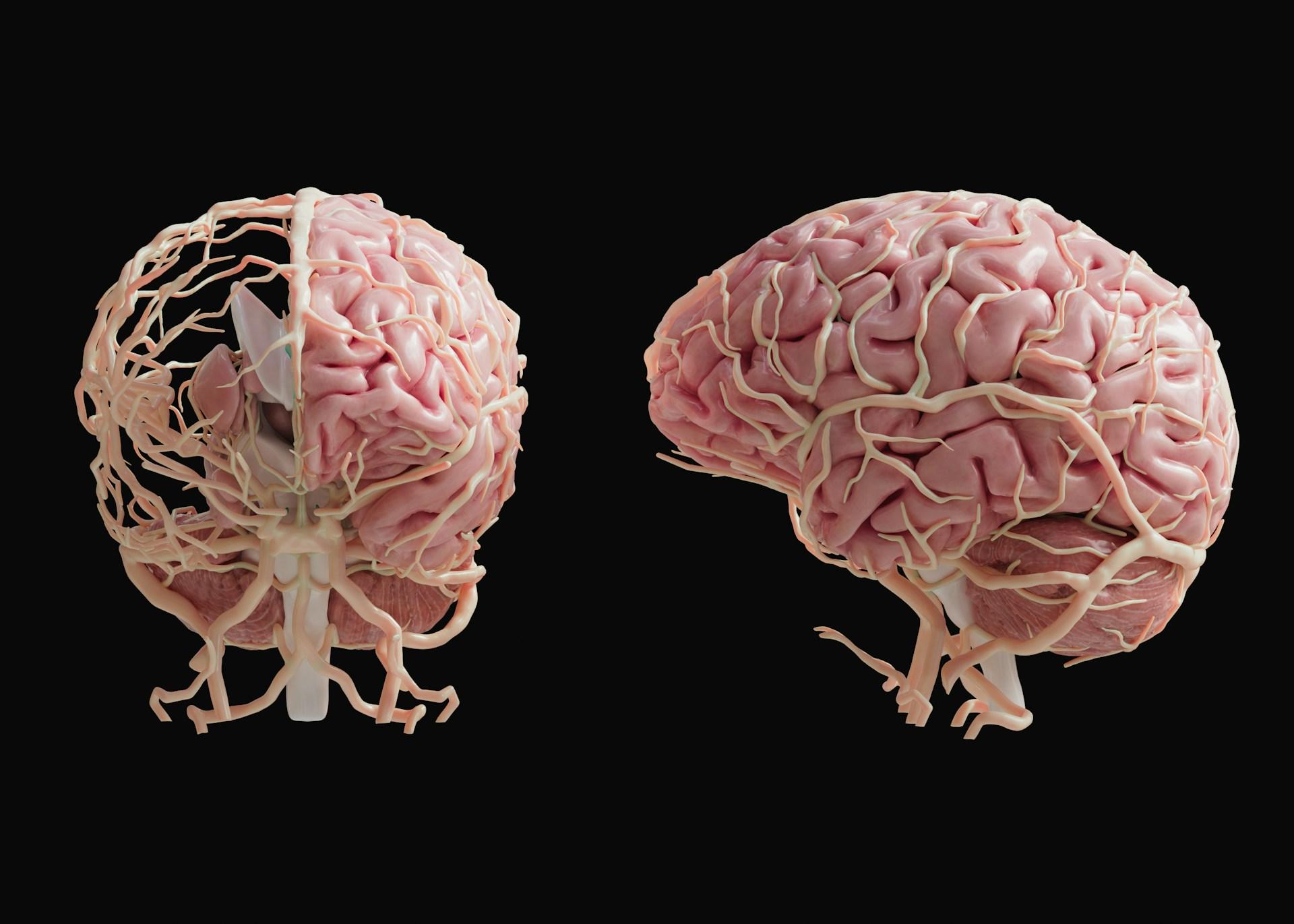Emotional intelligence often gets described as a soft skill or a natural talent, yet in practice it functions more like an operating system that governs how attention, memory, language, and physiology work together during pressure. When that system receives poor inputs, it produces poor outputs. What looks like coldness, moodiness, or defensiveness is usually a predictable response to fragmented attention, sleep debt, chronic stress, thin emotional vocabulary, inherited patterns, and environments that reward the wrong signals. Understanding these root causes makes emotional intelligence feel less mysterious and more trainable, because each cause suggests a concrete repair.
Attention is the first place the system breaks. Conversations do not fail because people forget facts. They fail because the listener’s attention arrives late or leaves early. In a life filled with constant notifications and rapid context switching, the mind begins to scan for keywords rather than listen for meaning. You can hear every word and still miss the point if your focus flits between devices and mental tabs. This fragmentation breeds impatience, and impatience slides into judgment before you even notice. The other person feels that judgment and retreats, which confirms your bias that they are being evasive. The loop tightens with every hurried exchange. Emotional intelligence improves the moment attention steadies, because presence invites nuance and nuance allows for better choices.
Sleep debt pushes the ceiling even lower. With too little rest, the brain narrows its tolerance for ambiguity and reads threat where none exists. Speech speeds up, tone becomes sharp, and small frictions feel like personal slights. The body is not plotting against you. It is trying to keep you alive by turning up the alarms. Those alarms drown out nuance and shrink the pause you need before you respond. Once a person experiences the difference a few nights of solid sleep can make, the link between rest and emotional control becomes impossible to ignore. Sleep is not a luxury in this system. It is the power supply.
Chronic stress adds a constant hum of arousal that rewires perception itself. Under sustained load, the brain begins to overfit for danger. A neutral face looks stern. A mixed signal feels hostile. You brace for attack and then respond to the attack you expect rather than the moment you are in. Many people think of stress as a matter of workload, but ambiguity, lack of closure, and weak boundaries create the same internal pressure. Open loops stacked on open loops crowd out the mental space needed for empathy. Even the most sophisticated communication tools fail when the processor is saturated. Reducing baseline stress is not about achieving a calm life. It is about lowering noise so the right parts of your mind can come online.
Language shapes the range of possible responses. If you cannot name a feeling with any precision, you cannot regulate it with any precision. Many high performers possess a rich vocabulary for plans and metrics and only a handful of words for inner life. They tell a partner they feel “fine” when they are depleted, or they say “annoyed” when they feel unseen, or they report being “stressed” when they are afraid. Coarse labels lead to coarse actions. The moment a person expands the lexicon, even by ten simple words that mark different shades of anger, sadness, and fear, behavior softens and choice expands. This is not therapy jargon for its own sake. It is the fine motor control of the inner world.
Modeling sets the emotional defaults that run silently beneath new experiences. A childhood marked by avoidance teaches that safety equals silence. A childhood marked by volatility teaches that truth equals intensity. Neither script is wrong in isolation, but both distort present reality through overuse. Adults repeat the move that once protected them and mistake it for authenticity. Detachment becomes honesty. Escalation becomes courage. The turning point arrives when a person notices the inheritance and chooses to write a new rule. That choice does not erase the old reflex, but it starts a different practice that clips fewer relationships along the way.
Skill practice tends to be lopsided. People rehearse content rather than process. They plan talking points and slides, but they do not rehearse the recovery sequence they will run when they get interrupted or challenged. Under heat, you do not invent a better move. You execute the move you have repeated. Emotional intelligence looks spontaneous from afar. Up close it is a handful of simple habits drilled until they feel natural. Notice your body. Name your state. Breathe out slowly. Ask a clarifying question. Then answer. Rehearsed in calm settings, that sequence becomes a bridge over the most turbulent moments.
Feedback scarcity keeps blind spots in place. If people anticipate a sharp or dismissive reaction, they soften the truth or avoid it altogether. You will leave a meeting confident that you were clear, while others carry confusion that they do not feel safe enough to report. Over time this gap corrodes trust. Teams drift without saying so. Partners become careful rather than honest. The person with authority thinks they are unlucky with hires. In reality they are starved of mirrors. The fix is not an open door policy. The fix is a track record of receiving one small note at a time without self-defense, then showing the note in action.
Technology compresses empathy by removing tone, timing, and consequence. Text strips away the signals that facial muscles, breath, and posture communicate without effort. Speed accelerates expression faster than reflection can keep up. Filters remove the sense that words land in bodies, not just inboxes. After enough quick emotional bursts and slow public corrections, the brain treats expression and connection as separate acts. The muscles that read people fall out of practice and live interactions begin to feel riskier than they are. Rebuilding that muscle requires deliberate exposure to longer, slower, embodied conversations.
Physiology is not background. The brain rides in a body, and a body stuck in low grade alert makes thoughtful choice expensive. Poor fueling, low movement, and shallow breathing tilt the system toward short cuts. Sugar and caffeine look like energy. Sarcasm looks like clarity. Both feel crisp for a moment and then boomerang. You do not need a complex stack of hacks to support emotional control. You need stable meals, real water, daylight, walking, and slow exhales that tell your nervous system to stand down. These basics do not solve relationship puzzles by themselves. They make solutions possible by lowering the internal volume.
Values that never meet tradeoffs create hypocrisy that everyone can feel. Leaders say they value openness and then punish dissent. Parents say they prize care and then reward speed. Teams do not follow slogans. They follow the incentives they can observe. When rewards contradict the stated values, signals lose meaning and trust evaporates. That breakdown often gets mislabeled as poor emotional intelligence in individuals, when the real cause is a structure that teaches the wrong lessons. When incentives realign with values, behavior improves with surprisingly little training.
Time compression erodes empathy by removing transitions. Back to back calls and context collisions carry residue from room to room. A harsh question you fielded at noon becomes a harsh answer you deliver at twelve fifteen. Each spillover is small on its own and devastating in aggregate. Protecting tiny buffers is not self-indulgence. It is hygiene. Ninety seconds of quiet can reset a conversation. One deep breath at the threshold can change the tone you bring home.
Identity can harden into a cage. If you see yourself as the calm one, you may avoid difficult truths to preserve the image. If you see yourself as the straight shooter, you may deliver facts without care and call it honesty. Emotional intelligence thrives on flexibility. The right move changes with the person and the room. Adapting to context is not fakery. It is respect. When you hold identity more lightly, you gain freedom to choose rather than perform.
Unfinished repair keeps taxing the system long after the formal conflict ends. People call the resulting numbness burnout, and sometimes it is. Often it is simply emotional debt that accumulates when hard talks end without closure. The mind keeps paying interest through rumination and irritability. A vacation will not clear that balance. Only a complete conversation can do that work, even if the only people present are you and a piece of paper.
Power dynamics distort reading. Authority changes the room in ways that are invisible from the top. People mirror leaders without meaning to. Laughter follows the leader’s smile and stiffness follows their frown. Leaders mistake this echo for alignment and then feel blindsided by exits or quiet quitting. What looks like betrayal is often unspoken fear. Intelligent systems account for power by creating ways to lower status pressure, such as anonymous prompts or structured turn taking, so real signals can surface.
Culture shapes expression. Some communities prize restraint. Others prize expressiveness. If you cross cultures, half your rooms will misread your default settings. You will judge quiet as cold or energy as drama, and that judgment will block curiosity. Curiosity is the bridge that restores accuracy. Ask how local norms handle disagreement. Ask what a polite refusal sounds like. Treat emotional intelligence like language learning. Fluency is born from exposure, translation, and practice.
Once you see the pattern, the question “what causes poor emotional intelligence” stops pointing to character flaws and starts pointing to system design. Fragmented attention, sleep debt, chronically high arousal, a thin emotional vocabulary, inherited scripts, unpracticed processes, scarce feedback, compressed digital channels, unstable physiology, misaligned incentives, relentless scheduling, rigid identity, unfinished repairs, distorted status signals, and cultural mismatch all tilt the system in predictable ways. None of these require a personality transplant. Each invites a practical adjustment.
Repair begins with measurement. Choose three recent conflicts and write down what triggered you, what you felt, what you did, and how it landed. Look for repeats. Most people discover a small set of moves they use everywhere, regardless of context. Awareness without action changes little, so link the review to one input you can shift for seven days. Guard sleep like a deadline. Remove one source of notification noise. Add a ninety second buffer between contexts. Pick five emotion words and use them every day. Small changes compound inside this system.
Add a reflection loop so the calibration does not drift. After key conversations, ask for one short note about what helped and one short note about what hurt. Resist the urge to defend or explain. Thank the person and bring one suggestion to life in the next interaction. As people learn that you can hold data without punishment, the data improves. Your presence will change first. Outcomes follow at a lag.
Finally, rehearse pressure while calm. Decide on a simple response sequence that you would be proud to run in your hardest conversations. Practice it in low stakes settings until it becomes automatic. When heat rises, you will not build a bridge on the spot. You will drive across the one you built yesterday. That is what emotional intelligence looks like from the inside. It is not a mysterious gift. It is a set of stable inputs and practiced responses that protect clarity when it matters.
The promise is not that you will never react or that conflict will disappear. The promise is that your system will hold shape under strain. Your attention will arrive whole. Your nervous system will stay inside a window where choice is possible. Your language will match your inner life closely enough to guide your behavior. Your identity will flex. Your incentives will teach the right lessons. And the people around you will feel safe enough to tell you the truth in time to make use of it. That is the practical heart of emotional intelligence. It is not soft. It is the force that converts knowledge into outcomes and care into trust.












.jpg&w=3840&q=75)

